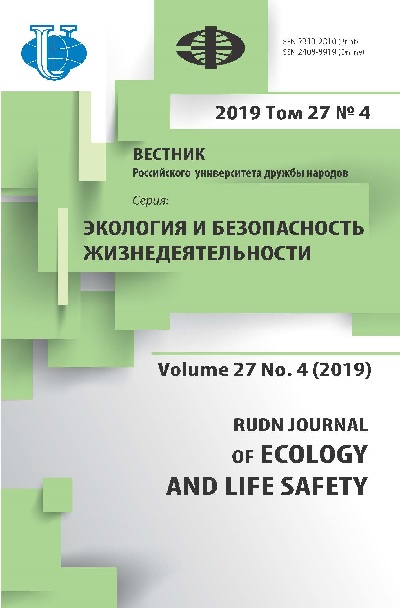Principles of constructed wetlands designing
- Authors: Rybka K.Y.1, Shchegolkova N.M.1,2
-
Affiliations:
- Water Problems Institute of RAS
- Lomonosov Moscow State University
- Issue: Vol 27, No 4 (2019)
- Pages: 255-263
- Section: Industrial Ecology
- URL: https://journals.rudn.ru/ecology/article/view/24009
- DOI: https://doi.org/10.22363/2313-2310-2019-27-4-255-263
Cite item
Full Text
Abstract
Constructed wetlands (CW) - shallow surfaces or subsurface water bodies, planted with higher aquatic plants and designed to treat wastewater - have been actively used in world practice for the last decades. There are no universal principles for designing such systems, so for each combination of landscape (in which a CW is located) and the quality of wastewater, an individual type of CW is selected. The article provides an overview of the principles adopted in the world for calculating the main technological parameters of CWs (choice of the type of CW, calculation of the area of CW, the residence time of the water in the system, the choice of filtering medium, etc.) developed on the basis of numerous functioning objects. The recommendations given in the article are applicable for small and mediumsized CWs intended for the treatment of domestic, storm and agricultural wastewater.
Keywords
About the authors
Kseniia Y. Rybka
Water Problems Institute of RAS
Author for correspondence.
Email: kseniarybka@gmail.com
postgraduate student, Laboratory of Water Protection
3 Gubkina St, Moscow, 117971, Russian FederationNataliia M. Shchegolkova
Water Problems Institute of RAS; Lomonosov Moscow State University
Email: nshegolkova@mail.ru
leading researcher, Laboratory of Water Protection, Water Problems Institute of RAS; leading researcher, Faculty of Soil Science, Lomonosov Moscow State University
3 Gubkina St, Moscow, 117971, Russian Federation; 1 Leninskiye Gory, bldg. 12, Moscow, 119991, Russian FederationReferences
- Masi F, Bresciani R, Martinuzzi N, Cigarini G, Rizzo A. Large scale application of French reed beds: Municipal wastewater treatment for a 20,000 inhabitant's town in Moldova. Water Science & Technology. 2017;76(1):134–146.
- US EPA. A Handbook of Constructed Wetlands. A guide for creating wetlands for: agricultural wastewater, domestic wastewater, coal mine drainage, stormwater in the Mid-Atlantic region. Philadelphia; 1994.
















